Yoga Pose Selector for Menstrual Cramp Relief
Select your preferences and click "Generate My Yoga Routine" to see your personalized sequence.
When that familiar twinge hits each month, you want something that works fast, feels good, and doesn’t require a pharmacy. The answer often lies on the mat. Below you’ll find a practical guide that turns everyday yoga into a natural pain‑relief tool for menstrual cramps.
Quick Takeaways
- Target the lower abdomen, pelvic floor, and lower back with specific poses.
- Combine gentle stretches with deep breathing to boost blood flow.
- Start with 5‑minute sessions and gradually build to a 20‑minute routine.
- Listen to your body-stop if pain spikes or you feel dizzy.
These points will guide you as you try each pose, modify as needed, and track progress over a few cycles.
What Are Menstrual Cramps?
Menstrual cramps are painful uterine contractions that occur during the luteal phase of the menstrual cycle, often described as a squeezing or throbbing sensation in the lower abdomen. They happen because the uterus releases prostaglandins to shed its lining, which triggers the muscles to contract. Higher prostaglandin levels mean stronger cramps, while lower levels bring milder discomfort.
Why Yoga Helps
Yoga works on three fronts: stretching tight muscles, encouraging deeper breathing, and calming the nervous system. When you move into a gentle forward bend, the pelvic region opens, reducing the pressure on uterine muscles. Controlled breath activates the parasympathetic response, which can lower prostaglandin production. Over time, regular practice can improve blood flow to the pelvic area, delivering oxygen and easing inflammation.
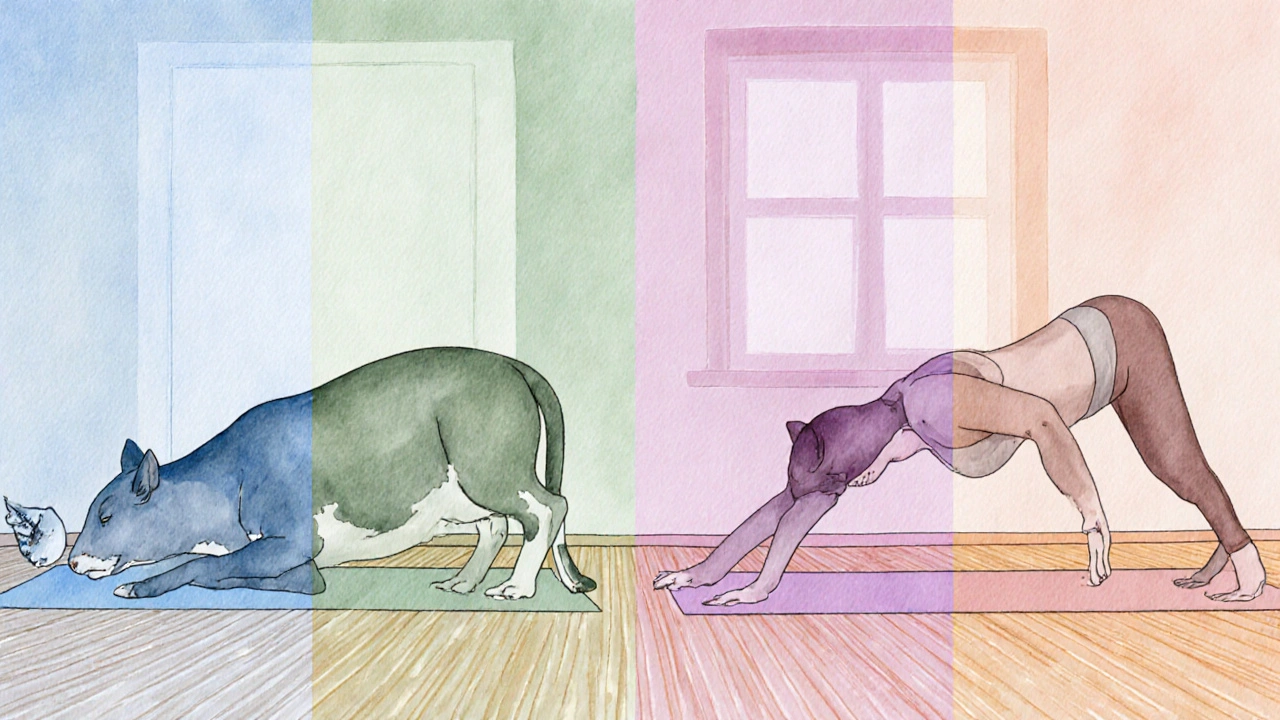
Key yoga poses for Cramp Relief
Below is a curated list of poses that directly address the muscles involved in menstrual pain. Each entry notes the primary target, recommended hold time, and difficulty level.
| Pose | Target Area | Duration | Difficulty |
|---|---|---|---|
| Child’s Pose (Balasana) | Lower back & pelvic floor | 1‑2minutes | Beginner |
| Supine Twist (Supta Matsyendrasana) | Spine, hips, abdominal muscles | 30‑60seconds per side | Beginner |
| Cat‑Cow (Marjaryasana‑Bitilasana) | Spinal flexibility | 5‑10 breaths | Beginner |
| Butterfly Stretch (Baddha Konasana) | Inner thighs, groin | 1‑2minutes | Beginner‑Intermediate |
| Bridge Pose (Setu Bandhasana) | Pelvic floor, glutes | 30‑45seconds | Beginner‑Intermediate |
| Reclining Hand‑to‑Big‑Toe Pose (Supta Padangusthasana) | Hamstrings, lower back | 30‑60seconds per leg | Intermediate |
| Seated Forward Fold (Paschimottanasana) | Hamstrings, spine, abdomen | 1‑2minutes | Intermediate |
| Legs‑Up‑the‑Wall (Viparita Karani) | Circulation, lower back | 3‑5minutes | Beginner |
How to Perform Each Pose Safely
- Child’s Pose (Balasana)
Kneel on the mat, big toes touching, knees spread wide. Sit back on heels, stretch arms forward, forehead to floor. Breathe deeply for 1‑2 minutes. If your knees feel sore, place a blanket between them.
- Supine Twist (Supta Matsyendrasana)
Lie on your back, hug knees to chest, then let both knees fall to the right while extending arms out to the sides. Turn your head to the left. Stay for 30‑60 seconds, then switch sides. Keep shoulders flat on the floor.
- Cat‑Cow (Marjaryasana‑Bitilasana)
Start on hands and knees. Inhale, drop belly, lift head (Cow). Exhale, round spine, tuck chin (Cat). Move with your breath for 5‑10 cycles, staying gentle on the lower back.
- Butterfly Stretch (Baddha Konasana)
Sit upright, bring soles of feet together, let knees fall open. Hold feet with hands, gently press knees toward the floor. Hold 1‑2 minutes, breathing into the hips.
- Bridge Pose (Setu Bandhasana)
Lie on your back, knees bent, feet hip‑width apart. Press into feet, lift hips, interlace hands under your back. Hold 30‑45 seconds, then release slowly.
- Reclining Hand‑to‑Big‑Toe Pose (Supta Padangusthasana)
Lie on your back, raise right leg, hold the big toe with a strap or hand. Keep the opposite leg grounded. Hold 30‑60 seconds, then repeat on the other side.
- Seated Forward Fold (Paschimottanasana)
Sit with legs straight, inhale to lengthen spine, exhale to hinge at hips, reaching toward feet. Keep a slight bend in the knees if hamstrings are tight. Hold for 1‑2 minutes.
- Legs‑Up‑the‑Wall (Viparita Karani)
Sit sideways against a wall, swing legs up, and rest your back on the floor. Arms can rest by your sides. Stay for 3‑5 minutes, focusing on slow breaths.
Building a Menstrual‑Friendly Yoga Routine
Start with a 5‑minute warm‑up, then flow through three to five of the poses above. End with a calming hold like Legs‑Up‑the‑Wall. Here’s a sample 15‑minute sequence:
- Cat‑Cow - 1 minute (5 breaths each)
- Child’s Pose - 2 minutes
- Supine Twist - 1 minute each side
- Butterfly Stretch - 2 minutes
- Bridge Pose - 45 seconds, repeat twice
- Legs‑Up‑the‑Wall - 5 minutes
Notice the emphasis on gentle opening and relaxation rather than intense strength work. If you have heavy flow or feel fatigued, trim the routine to the poses that feel most soothing.
Common Mistakes & Safety Tips
- Pushing into pain. Stretch to a comfortable point; sharp pain signals that you’re over‑stretching.
- Holding breath. Use breathing technique of a slow, diaphragmatic inhale and exhale to keep the nervous system relaxed.
- Skipping the warm‑up. Jumping straight into deep forward bends can strain the spine. Always begin with Cat‑Cow or gentle rocking.
- Rushing the cool‑down. Ending abruptly can leave you feeling light‑headed. Spend at least two minutes in a restorative pose like Legs‑Up‑the‑Wall.
- Ignoring hormonal cues. During heavy days, your body’s hormonal balance may shift, making flexibility fluctuate. Adjust duration and intensity accordingly.
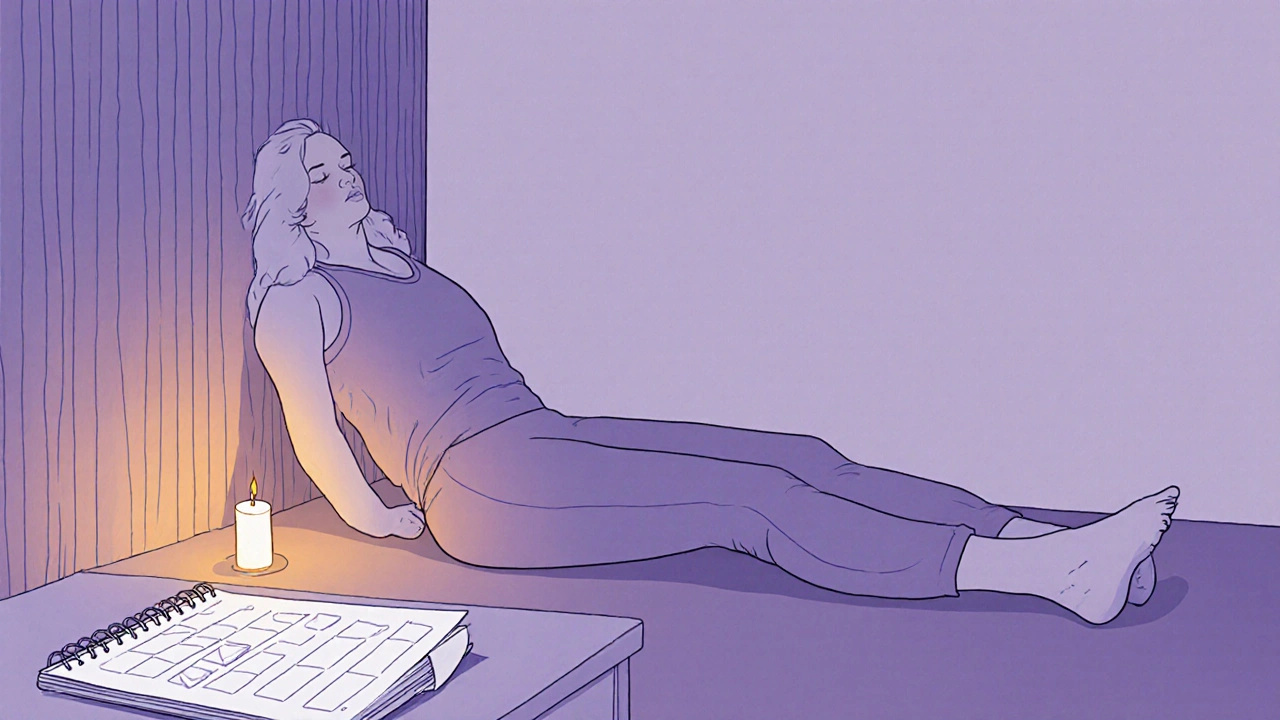
Frequently Asked Questions
Can yoga replace medication for cramps?
Yoga isn’t a cure, but many people find it reduces reliance on over‑the‑counter painkillers. The key is consistency; regular sessions can lower prostaglandin spikes, which often means milder pain without medication.
How often should I practice these poses?
Aim for a short routine (10‑15minutes) three to four times a week, and increase to daily use during the heaviest days of your cycle.
Is it safe to do yoga while on my period?
Yes, as long as you honor comfort levels. Choose gentle, forward‑folding poses and avoid inverted or overly vigorous styles if you feel dizzy.
Do I need special equipment?
A yoga mat and a strap or towel for the leg‑up‑the‑wall pose are enough. A bolster or folded blanket can make Child’s Pose more supportive.
Can these poses help other menstrual symptoms?
Yes. The same stretches can ease bloating, lower‑back tension, and mood swings by encouraging circulation and activating the parasympathetic nervous system.
Give the routine a try during your next cycle. Track how you feel day by day, tweak the poses that resonate best, and you’ll likely notice a smoother, less painful period over time.
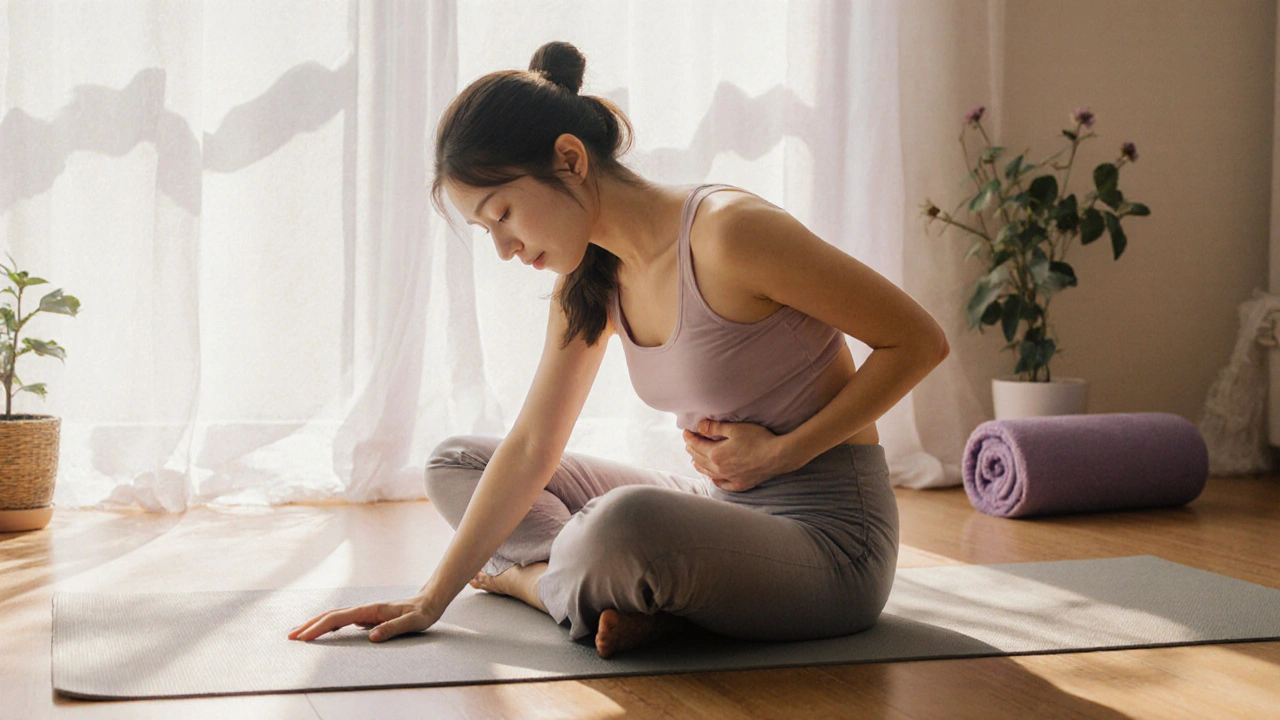


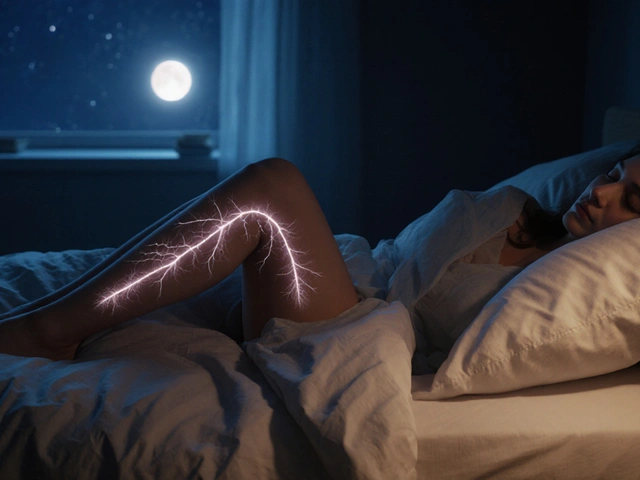
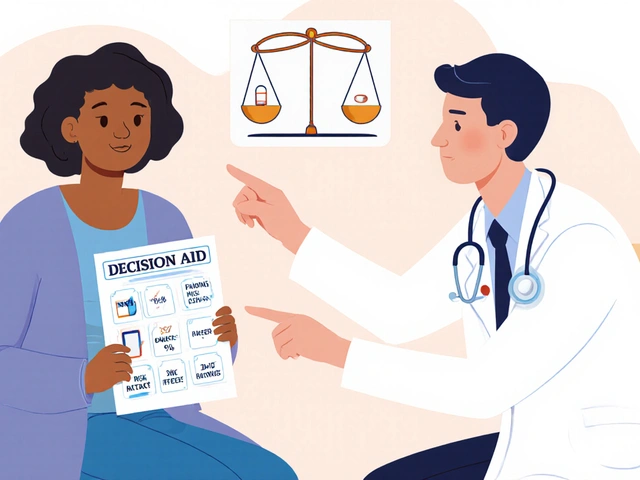


Give these poses a try on a low‑flow day and notice how the stretch eases the ache
What they don’t tell you is that the yoga industry is secretly funded to keep you dependent on their premium subscriptions, so they push you to endless classes while the real relief is right in the simple poses listed here
A good tip is to sync your breath with each movement-inhale as you lengthen, exhale when you fild. It'll help keep your mind off the cramp.
While most swear by gentle forward folds, the real magic lies in reversing the flow-start with a vigorous bridge and collapse into child’s pose, because the body thrives on paradoxical tension.
If you think longer holds are always better, you might be missing the point; sometimes a rapid series of five‑second micro‑stretches can shock the muscles into releasing tension.
When you first sit on your mat during that dreaded time of the month, it’s easy to feel defeated before you even begin. Remember that each pose is a small act of kindness toward your own body. Start with Cat‑Cow, moving slowly with each breath, allowing the spine to articulate fully. Feel the subtle expansion in your belly as you inhale during the Cow, and notice how that gentle expansion can counter the tightening sensations of cramps. Transition into Child’s Pose, letting your forehead rest on the earth, and imagine the mat absorbing the pain. Even though the pose feels passive, it actively opens the pelvic floor and invites relaxation. From there, glide into a Supine Twist, rotating slowly and keeping both shoulders grounded. The twist creates a gentle massage for the internal organs, which helps move stagnant blood. If you have the energy, lift into Bridge Pose, pressing through your feet to engage the glutes and support the lower back. Holding Bridge for a few breaths builds strength that counters the pulling feeling of uterine contractions. Finally, end with Legs‑Up‑the‑Wall, a restorative pose that reverses blood flow and reduces swelling. Spend at least three minutes there, focusing on slow diaphragmatic breaths. Throughout the sequence, keep your mind anchored to the breath, because the nervous system follows the rhythm you set. Consistency is key; practicing this routine two to three times a week can gradually lower the intensity of your cramps. So, give yourself permission to move, breathe, and heal, and you’ll likely find your periods becoming more manageable over the months.
Consider the body as a temple, a vessel of energy; the practice of yoga, when done with mindfulness, becomes a gateway, a portal to inner equilibrium; yet, without proper alignment, the very poses intended to soothe can aggravate, leading to a cascade of discomfort, which, paradoxically, is the very symptom you sought to alleviate.
Legs‑up‑the‑wall is perfect for quick relief.
They’ve hidden the fact that the ancient yogis deliberately encoded a vibrational code in each stretch, a code that modern pharma companies try to suppress because it bypasses their profit models.
I cant believe people still skip the warm‑up, its like driving a car without check‑ing the brakes and then wonder why you crash.
Incorporating diaphragmatic breathing into each pose can enhance parasympathetic activation, reducing prostaglandin release 😊. Additionally, maintaining a regular schedule reinforces neural pathways associated with relaxation 😊.
I’m curious how many of you have tried adding a short meditation after the routine; it seems to amplify the calming effect.
Just a tiny note: “Supine Twist” should be capitalised consistently, and “lower‑back” is typically written with a hyphen.
Thanks for sharing this, it’s really helpful! 🙂
Let’s all roll out our mats and crush those cramps together, you’ve got this!
It’s like the universe is staging a drama every month, and the hidden elite are counting on our pain to keep us distracted while they sell us needless pills.